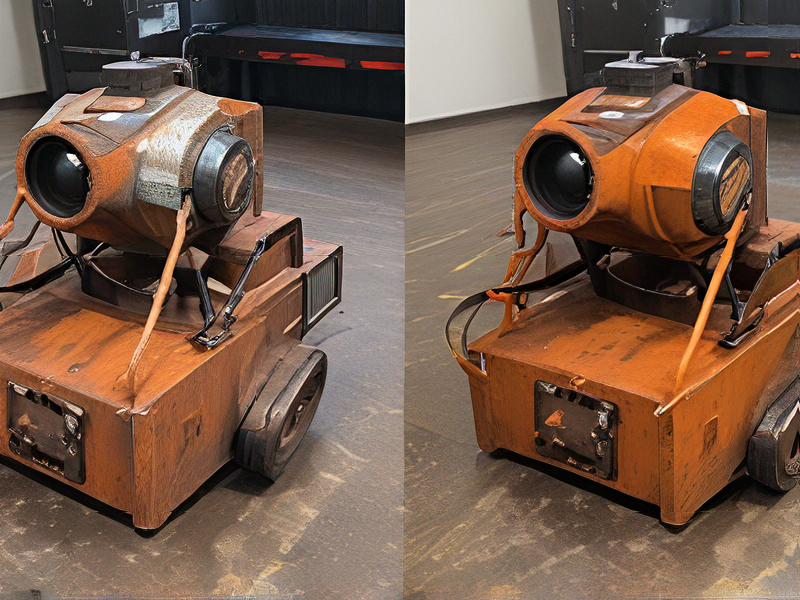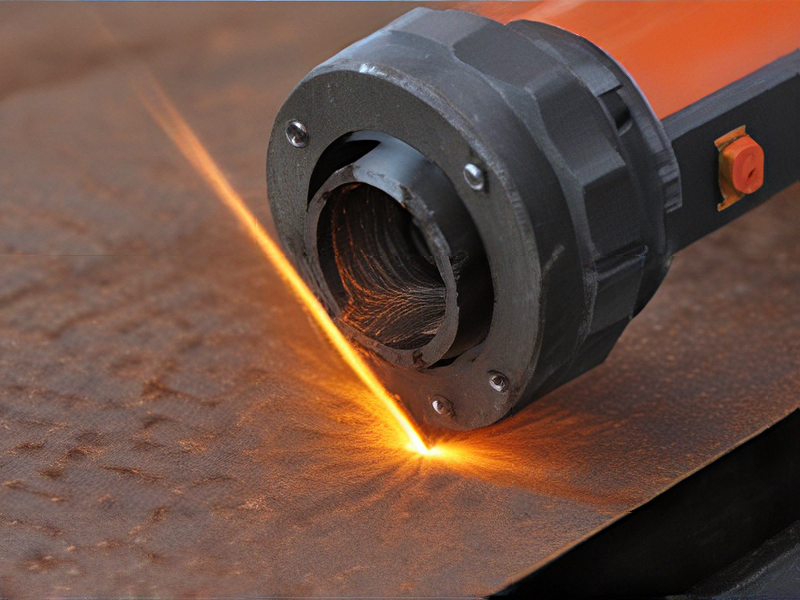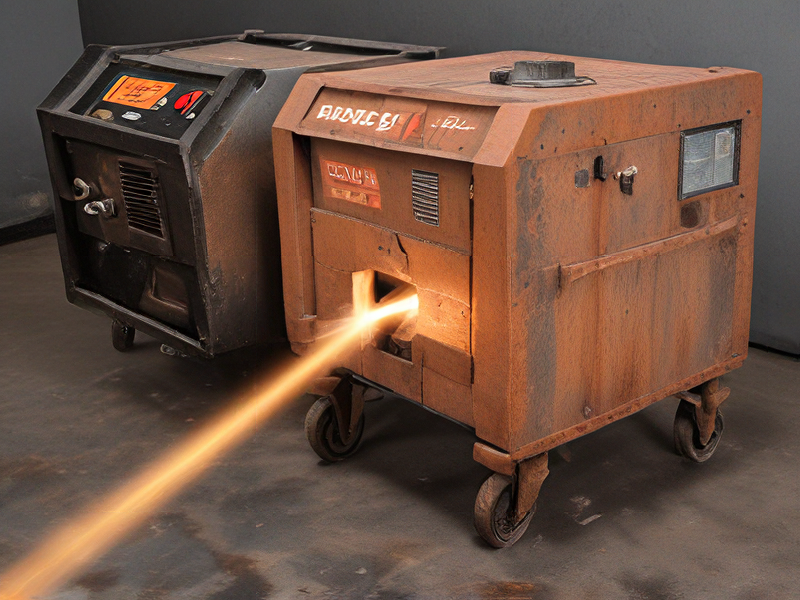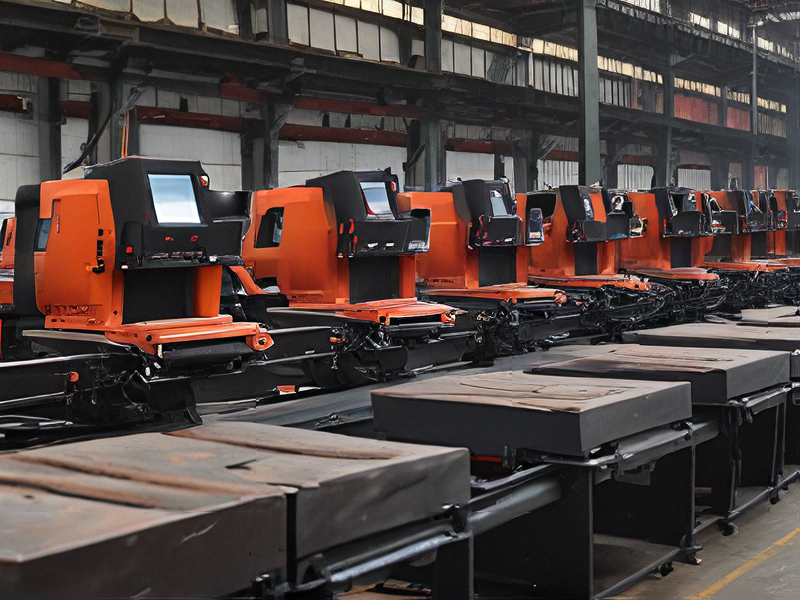Technology and Applications of laser rust removal machines
Laser rust removal machines leverage laser technology to clean and prepare metal surfaces by removing rust, paint, and other contaminants. They operate by emitting high-energy laser pulses that vaporize the rust layer without damaging the underlying material. This process is known as laser ablation.
Technology
1. Laser Source: Fiber lasers are commonly used due to their high efficiency, precision, and reliability. They produce a beam that is directed onto the rusted surface.
2. Optical Delivery System: This system includes mirrors, lenses, and scanners to focus and direct the laser beam precisely.
3. Control Systems: Advanced software controls the laser’s parameters, such as power, pulse duration, and scanning speed, ensuring optimal performance and safety.
Applications
1. Industrial Maintenance: Laser rust removal is widely used in industries such as automotive, aerospace, and shipbuilding. It efficiently cleans parts without abrasive materials or chemicals, reducing environmental impact.
2. Cultural Heritage Restoration: Conservators use lasers to clean and preserve historical artifacts and monuments. The precision of laser technology allows for delicate removal of corrosion without harming the underlying surfaces.
3. Manufacturing: In manufacturing processes, laser cleaning is employed to prepare surfaces for welding, bonding, or coating, ensuring better adhesion and quality of finished products.
4. Electronics: Laser cleaning is used to remove oxides and other contaminants from electronic components, improving performance and longevity.
Advantages
– Precision: Allows for targeted cleaning without damaging the base material.
– Environmental Safety: Eliminates the need for chemical solvents and reduces hazardous waste.
– Efficiency: Provides fast and consistent cleaning results, improving productivity.
– Versatility: Can be used on various materials and in different industrial applications.
Laser rust removal machines represent a cutting-edge solution for industrial cleaning, offering a blend of efficiency, precision, and environmental friendliness.

Quality Testing Methods for laser rust removal machines and how to control quality
Quality testing for laser rust removal machines involves several methods to ensure they meet performance and safety standards. Key testing methods include:
1. Laser Power and Stability Testing:
– Measure the laser output power using a power meter to ensure it matches the specified rating.
– Check the stability of the laser output over extended periods to confirm consistent performance.
2. Beam Quality Assessment:
– Evaluate the beam profile using a beam profiler to ensure it is uniform and within acceptable parameters.
– Test for beam divergence to verify that the laser maintains focus over the required distance.
3. Efficiency of Rust Removal:
– Conduct rust removal tests on different metal samples with varying levels of rust.
– Assess the cleaning speed and efficiency, ensuring the laser can remove rust effectively without damaging the base material.
4. Safety Features Verification:
– Test safety interlocks, such as emergency stops and protective housings, to ensure they function correctly.
– Verify that the laser system complies with safety standards, such as ISO or CE certifications.
5. Durability and Reliability Tests:
– Perform accelerated life testing to simulate long-term use and identify potential failure points.
– Subject the machine to environmental tests, including temperature and humidity cycling, to ensure it operates reliably under various conditions.
To control quality, implement the following measures:
1. Standard Operating Procedures (SOPs):
– Develop and adhere to detailed SOPs for each testing phase, ensuring consistency and repeatability in testing processes.
2. Regular Calibration and Maintenance:
– Regularly calibrate testing equipment to maintain accuracy.
– Schedule routine maintenance for the laser rust removal machines to prevent performance degradation.
3. Documentation and Traceability:
– Maintain comprehensive records of all tests and results, allowing for traceability and accountability.
– Implement a quality management system (QMS) such as ISO 9001 to formalize quality control processes.
4. Training and Certification:
– Ensure that personnel conducting the tests are well-trained and certified in relevant testing procedures.
– Provide ongoing training to keep staff updated on the latest testing methods and industry standards.
By systematically applying these testing methods and quality control measures, manufacturers can ensure the reliability, safety, and effectiveness of laser rust removal machines.

Tips for Procurement and Considerations when Purchasing from laser rust removal machines
When purchasing laser rust removal machines for procurement purposes, consider the following key tips:
1. Technology and Power Requirements: Evaluate the technology used (fiber laser, pulsed laser, etc.) and ensure it meets your specific rust removal needs in terms of power output and efficiency.
2. Safety Features: Ensure the machine has adequate safety features such as shielding against laser radiation, interlocks, and safety protocols to protect operators and surroundings.
3. Ease of Use and Maintenance: Opt for a machine that is user-friendly with intuitive controls and requires minimal maintenance. This reduces downtime and training costs.
4. Speed and Effectiveness: Assess the machine’s speed of rust removal and its effectiveness in removing rust without damaging underlying surfaces. Look for demonstrations or customer reviews to verify performance.
5. Versatility: Consider whether the machine can handle different types of metals and surfaces beyond rust removal, such as paint stripping or surface cleaning.
6. Cost and Return on Investment (ROI): Compare upfront costs, operational costs (electricity, maintenance), and potential savings in labor and materials. Calculate the ROI to justify the investment.
7. Supplier Reputation and Support: Choose a reputable supplier with a track record of providing quality machines and reliable customer support, including training and technical assistance.
8. Size and Portability: Depending on your operational needs, consider the size and portability of the machine. Larger machines may offer higher throughput but require more space.
9. Environmental Impact: Assess any environmental considerations, such as noise levels, emissions, and waste disposal requirements, to ensure compliance with regulations and minimize ecological footprint.
10. Warranty and After-Sales Service: Verify the warranty period and what after-sales services are provided, such as repairs, spare parts availability, and software updates.
By carefully evaluating these factors, you can make an informed decision when purchasing a laser rust removal machine that best suits your procurement needs and operational requirements.

FAQs on Sourcing and Manufacturing from laser rust removal machines in China
FAQs on Sourcing and Manufacturing Laser Rust Removal Machines from China
1. Why source laser rust removal machines from China?
– Cost-Effectiveness: China offers competitive pricing due to lower labor and production costs.
– Advanced Technology: Chinese manufacturers often utilize state-of-the-art technology.
– Variety: A wide range of models and specifications are available to suit different needs.
2. How do I find reliable suppliers?
– Trade Shows: Attend industry trade shows like the China International Machine Tool Show (CIMT).
– Online Platforms: Use platforms like Alibaba, Made-in-China, and Global Sources.
– Certifications: Look for ISO certifications and compliance with international standards.
3. What should I look for in a manufacturer?
– Experience: Established companies with years of experience are more reliable.
– Quality Control: Ensure they have stringent quality control measures.
– Customer Reviews: Check reviews and testimonials from other international clients.
4. How do I ensure the quality of the machines?
– Third-Party Inspections: Hire third-party inspection services to verify the quality before shipment.
– Sample Orders: Request samples or small trial orders before committing to larger quantities.
– Warranty: Ensure the machines come with a warranty and after-sales service.
5. What are the payment terms and methods?
– Common Terms: Terms like FOB (Free on Board) or CIF (Cost, Insurance, and Freight) are typical.
– Payment Methods: Secure payment methods include Letters of Credit (L/C), T/T (Telegraphic Transfer), and trade assurance services.
6. How long does the manufacturing process take?
– Lead Time: The lead time can range from 30 to 60 days, depending on the order size and customization requirements.
7. What are the shipping options?
– Shipping Methods: Options include air freight, sea freight, and express courier services.
– Cost: Sea freight is generally the most cost-effective for bulk orders.
8. Are there any import regulations?
– Customs Clearance: Be aware of your country’s import regulations and duties.
– Documentation: Ensure all necessary documents like the Bill of Lading, commercial invoice, and packing list are provided by the supplier.
9. How do I handle after-sales service?
– Local Support: Some manufacturers may have local representatives or partners.
– Training: Look for suppliers that offer training on machine operation and maintenance.
By addressing these FAQs, you can streamline the process of sourcing and manufacturing laser rust removal machines from China, ensuring a smooth and efficient experience.

